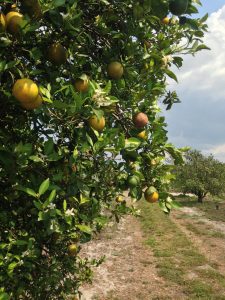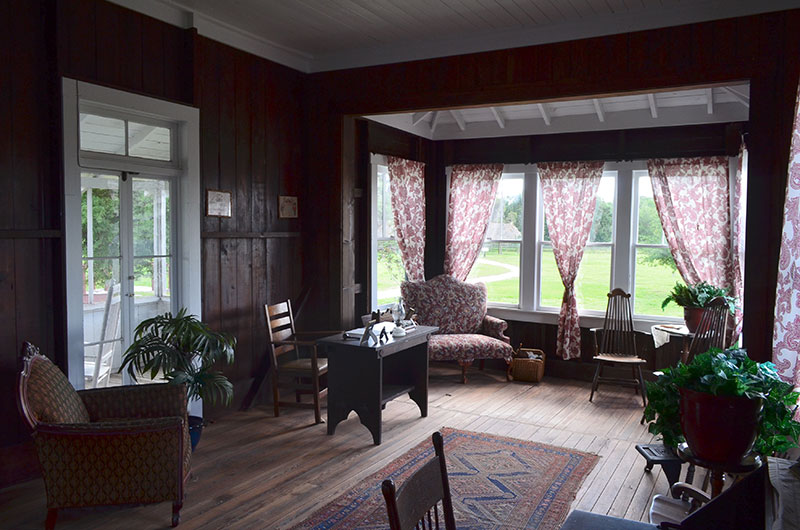
Oranges Were Here Long Before Disney
Orange Groves in Florida has always been big business. Citrus groves throughout Osceola County, Florida, began appearing about the same time in Shingle Creek, Boggy Creek, Narcoossee,…
Read MoreThe Pioneer Village tells the story of some of Osceola County’s founding families and showcases structures and artifacts from some of Florida’s earliest industries such as an original citrus packing mill and a replica cow camp like those used by Florida cracker cowboys. The village features 13 historic structures, including seven original buildings which once stood in different areas of Osceola County.
Interesting & useful facts
1.
A “Cracker” home is defined by the center breezeway which creates a natural air flow through the house.
2.
In the 1800's a paper coated with beeswax and linseed oil was used to wrap the oranges.
3.
“Cow hunters” were hired to herd the open-range cattle and to ensure they returned to their pens at night to nurse their calves.
Guided tours are offered at no additional charge on Wednesdays from 10:30 a.m. to 1:30 p.m. and on other days by appointment. To make an appointment, call 407-396-8644, ext. 2.
Each November, the Osceola County Historical Society offers a free Pioneer Day. for people to tour the village, see reenactors demonstrating 1800s life, Seminole dance demonstrations, children’s activities, live music, arts and crafts. Discover what life was like in the 1890s, a time when Central Florida was known for its cattle ranches and citrus groves rather than theme parks and roller coasters.
The town center of the village includes the buildings that played an important part in the life of early settlers – a train depot, blacksmith shop, church, general store and schoolhouse.
Tyson House
The Tyson family made a living as farmers. This original structure was built in the early 1920s by Enoch Tyson and is similar to other homes that were on the Tyson family farm. The Tyson family is descended from James and Victoria Tyson who were married in 1889 and had 11 children between 1890 and 1917.
Lanier Family Homestead
The Lanier family were prominent ranchers in Osceola County and many descendants still live in the area. The Lanier home was built in 1889 and is a referred to as a “Cracker” home, an early-American form of architecture defined by the center breezeway which creates a natural air flow through the house. Included on the Lanier Family Homestead are a wash house, smokehouse, barn, garden area and chicken coop – all essential to the homesteader life in the 1800s.

The Cadman family complex includes three structures – the family home, separate sleeping quarters for the boys, and a detached kitchen. The Cadman family moved from England and arrived in New York in 1888. They were part of a movement of wealthy investors attracted to Florida by promises of natural bounty, beauty, temperate climate, and commercial opportunity. The family made its living in the citrus industry and one of the original citrus packing plants is also located at Pioneer Village. Members of the Cadman family lived in the home from 1888 to 1980 and many modifications were made to the home over the years. For historical purposes, the home has been returned to its 1880s floorplan.
Citrus Packing House
The packing house is an original structure built around 1890 and helps tell the story of the citrus industry in Florida. Packing and selling oranges was the primary source of income for the Cadman family. The family is credited with inventing a paper coated with beeswax and linseed oil that was used to wrap the oranges.
Seminole Settlement
The Seminole Village features three dwellings called chickees constructed with an open, round-log wood frame and a thatched gable roof. One of the chickees includes an elevated platform about three feet off the ground; this would have been used for sleeping or to keep belongings dry.
Cow Camp
The cow camp represents a temporary structure used by “cow hunters” who were hired to herd the open-range cattle and to ensure they returned to their pens at night to nurse their calves and to be milked. The cow camp provided shelter for the cow hunters and served as a horse enclosure.
Partin House
The Partin House is the newest structure at Pioneer Village and was built in the early 1930s. The house was originally on the Henry O. Partin ranch and served as the caretaker’s house. Partin made history in Osceola County when he introduced Brahman cattle to the Florida cattle industry. The Brahmans originated in India, and their thick skin made them well-suited to the heat and insects in the Florida scrub. The Partin family still raises cattle in Osceola County. The Partin House is where you will start your tour of the village and includes a gift shop and staff offices.
4155 W. Vine Street, Kissimmee FL 34741
(407) 396-8644
info@osceolahistory.org
www.osceolahistory.org
Hours: Wednesday-Sunday, 10 a.m. to 4 p.m. Closed Monday and Tuesday
(Closed New Year’s Day, Easter, Thanksgiving, Christmas Eve and Christmas Day)
Free Admission
The History Museum features exhibits demonstrating the evolution of the regional environment during the past 300 years, including early Seminole life, wildlife in the Florida pines and swamps, and the rise of modern transportation and tourism.
The Welcome Center provides brochures and information about area attractions, restaurants and lodging.
Shingle Creek Regional Park
Pioneer Village and the History Museum are located within Shingle Creek Regional Park which offers walking and biking trails, picnic areas, children’s playgrounds, and canoe and kayak rentals.